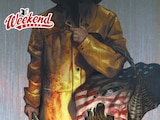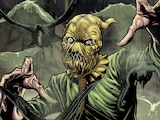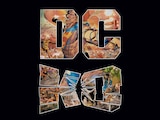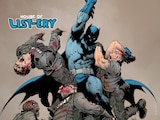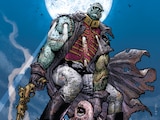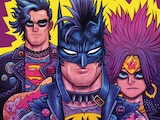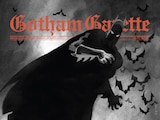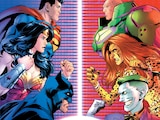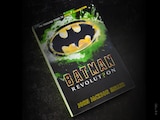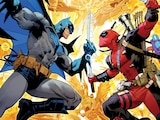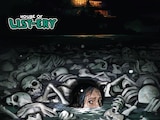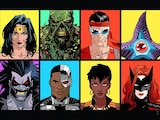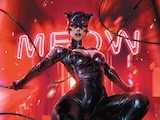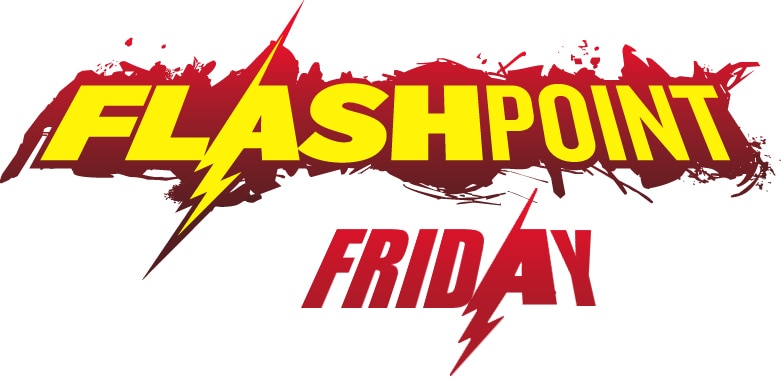 Earlier today, I gave you a step-by-step visual rundown of how a script page turns into a final piece of art. Now I want to show you two more process pieces by breaking out a couple covers. Let’s start with the cover to FLASHPOINT: EMPEROR AQUAMAN #1 – the same issue I gave you a sneak peek of this morning.
Covers tend to be tricky because not only does the artist need to capture the essence and themes of the whole book, but they also have to be careful not to reveal any spoilers. For these reasons, FLASHPOINT: EMPEROR AQUAMAN #1 is the perfect example of a successful cover. Looking at it, you certainly don’t get the impression that Aquaman is, to put it lightly, the nicest guy. He’s a warrior – one with attitude. He towers over a scene of destruction with his trident glimmering and ready for battle. So while the cover does not reveal any plot-specific spoilers, the overall feel of the book is made very evident upon first glance at it.
1. It all starts with a rough sketch based on brainstorming ideas about what the cover could look like.
Earlier today, I gave you a step-by-step visual rundown of how a script page turns into a final piece of art. Now I want to show you two more process pieces by breaking out a couple covers. Let’s start with the cover to FLASHPOINT: EMPEROR AQUAMAN #1 – the same issue I gave you a sneak peek of this morning.
Covers tend to be tricky because not only does the artist need to capture the essence and themes of the whole book, but they also have to be careful not to reveal any spoilers. For these reasons, FLASHPOINT: EMPEROR AQUAMAN #1 is the perfect example of a successful cover. Looking at it, you certainly don’t get the impression that Aquaman is, to put it lightly, the nicest guy. He’s a warrior – one with attitude. He towers over a scene of destruction with his trident glimmering and ready for battle. So while the cover does not reveal any plot-specific spoilers, the overall feel of the book is made very evident upon first glance at it.
1. It all starts with a rough sketch based on brainstorming ideas about what the cover could look like.
 2. Next, penciller Ardian Syaf takes this sketch and provides more detail and context.
2. Next, penciller Ardian Syaf takes this sketch and provides more detail and context.
 4. And to conclude the process, Kyle Ritter fills in the inks with eye-popping colors.
4. And to conclude the process, Kyle Ritter fills in the inks with eye-popping colors.
 Pretty cool stuff, right?
Tons and tons of work goes into this process. This is world-building one page at a time. Head on over to Comic Book Resources for two exclusive interviews with FLASHPOINT creators Dan Abnett & Andy Lanning and Scott Snyder & Lowell Francis for a more in depth breakdown of these processes (and for some sneak peeks at the FLASHPOINT titles they’re working on).
Pretty cool stuff, right?
Tons and tons of work goes into this process. This is world-building one page at a time. Head on over to Comic Book Resources for two exclusive interviews with FLASHPOINT creators Dan Abnett & Andy Lanning and Scott Snyder & Lowell Francis for a more in depth breakdown of these processes (and for some sneak peeks at the FLASHPOINT titles they’re working on).


